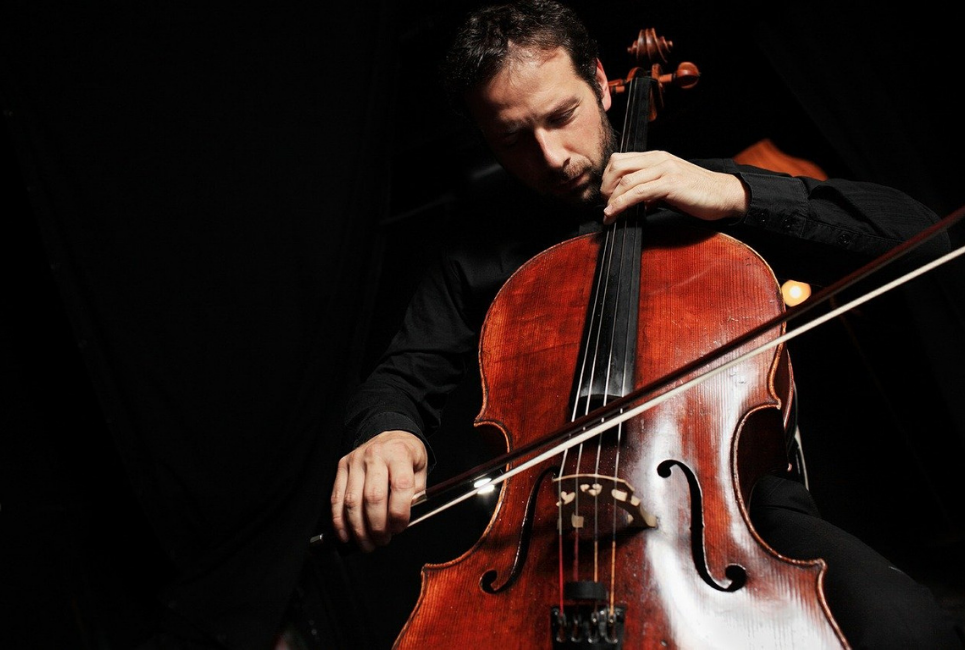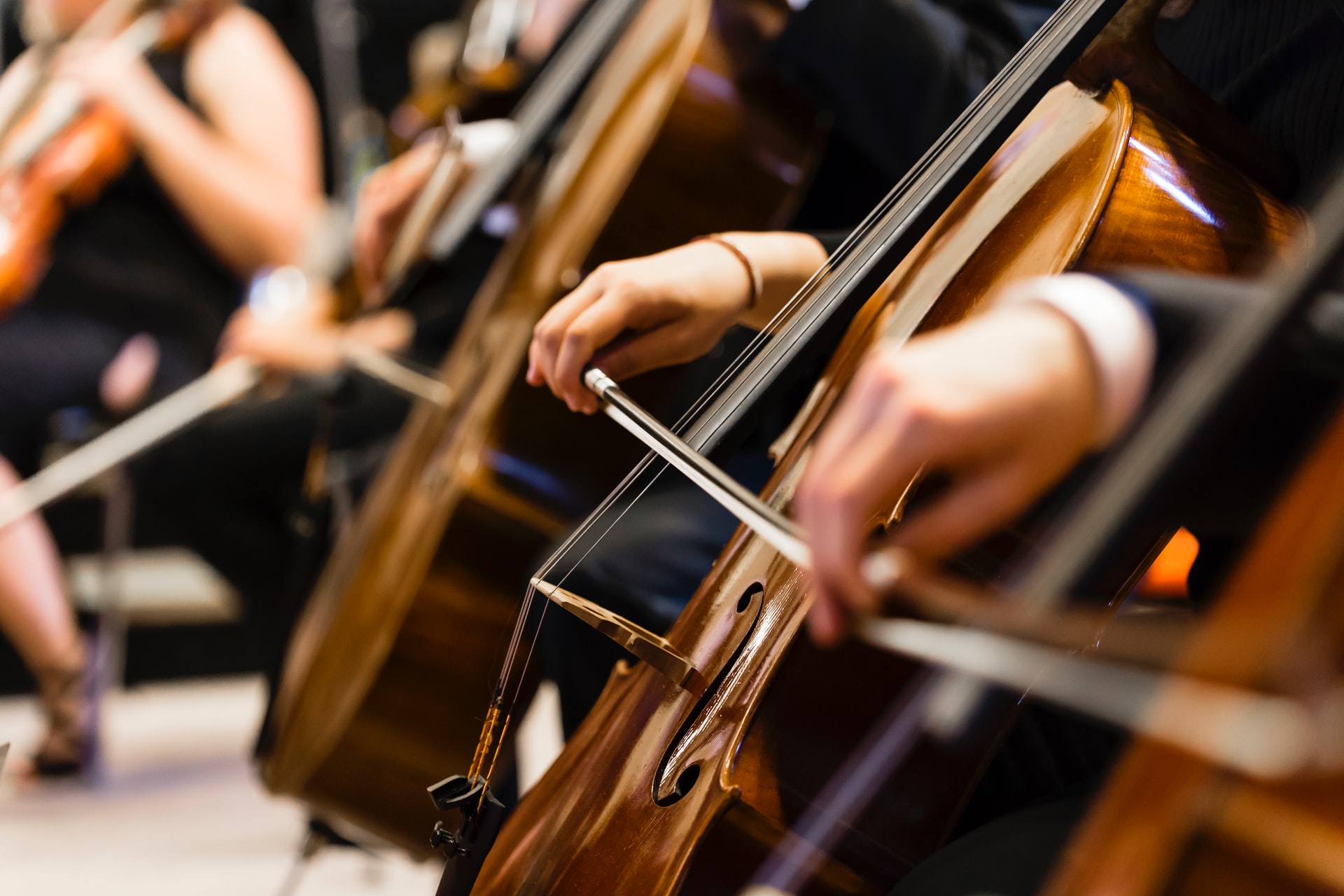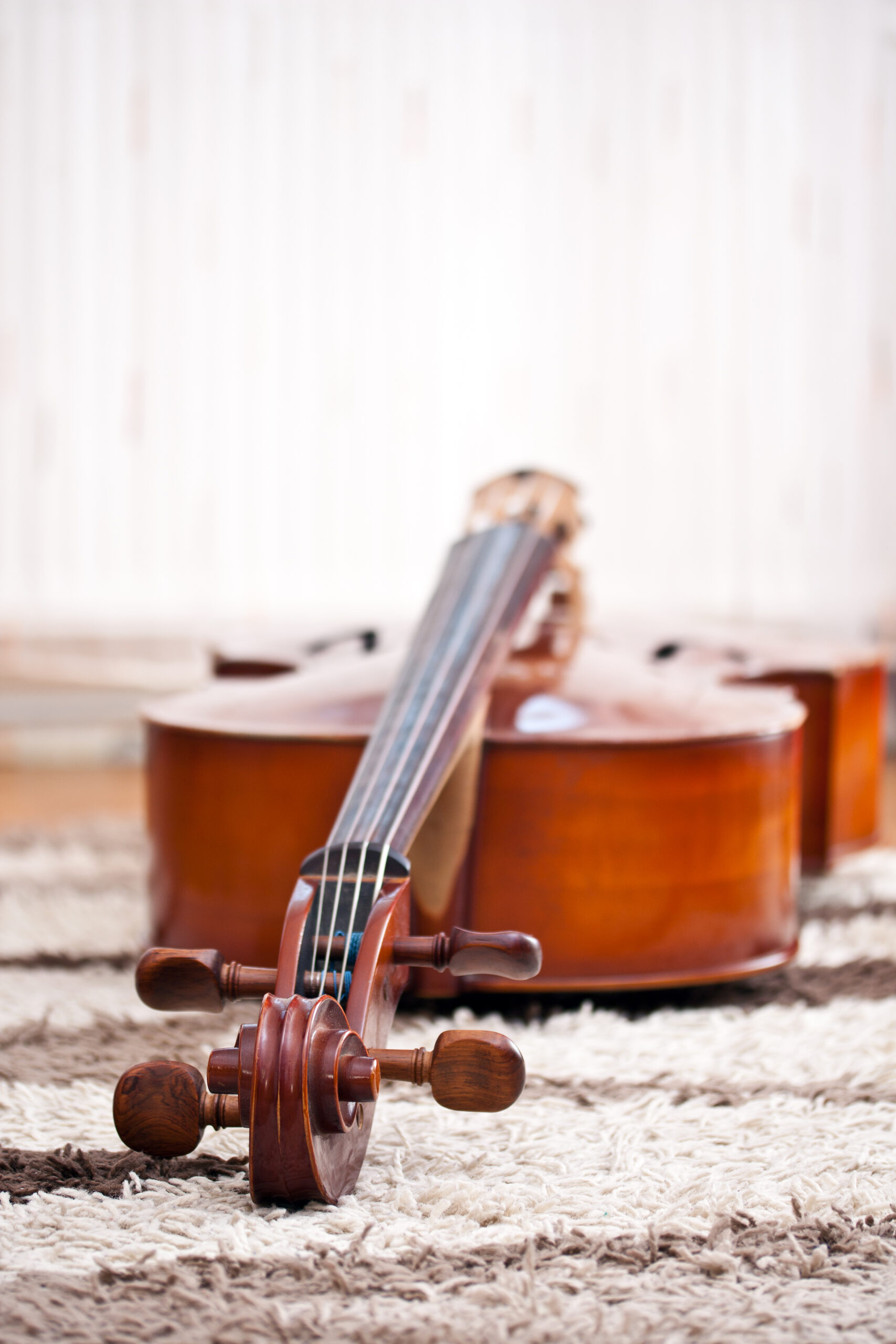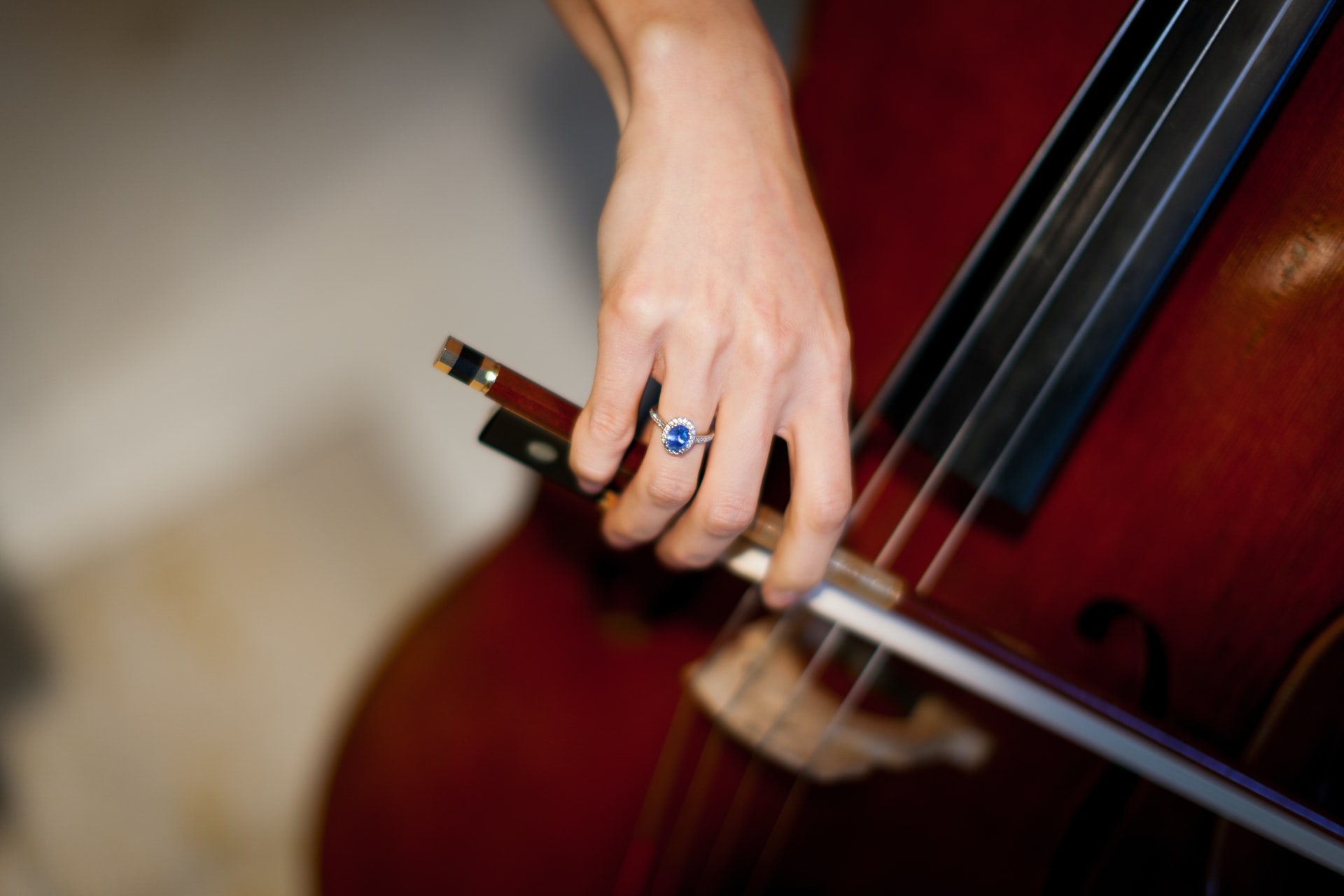- How to Find the Best 5 String Violins - April 19, 2022
- Top Violin Accessories to Consider - April 18, 2022
- Best Left-Handed Violins Guide - April 13, 2022
Summary: Knowing how to find the best bass cello comes down to physically inspecting the instrument, selecting something with the right tone and playability for your skill level, and having all the proper accessories.
If you are a brand-new musician or looking to upgrade the instrument you have, you can understand how challenging it is to find the best bass cello. There are many manufacturers and even more products from each manufacturer.
Physical Inspection
Many students or beginners will rent their first bass cello from a music shop or find the best bass cello for an affordable price.
This is a great idea. Being able to rent an instrument just for the duration of your music class allowed me as a young child to play instruments that we could never have afforded on our own. Sometimes, when you go to music shops that rent instruments like the bass cello, you can purchase used instruments for a much cheaper rate.
My first bass cello was used. Thankfully, I was singing in the choir with the owner’s son, so she knew me well and understood our family’s financial constraints. Because of these factors, she was willing to explain how to physically inspect a cello. I learned that this was not something you necessarily needed to do if you were buying brand-new, but if you are renting or buying used, you need to make sure that you have a quality instrument.
Check:
- For any cracks in the instrument
- Chips or scratches that are not part of the design (something called “Antiquing”)
- Fingerboard condition
- Bridge condition
Cracks
So, physically inspect the instrument and look for cracks everywhere in the body, the neck, the fretboard, the back, the front, and so on. Look underneath the fingerboard or tailpiece, places difficult to see with the naked eye.
Cracks can be fixed; I have fixed some cracks before on an instrument I truly loved, but it’s expensive, and it doesn’t always bring your instrument back to its original sound quality. What is more important is that if you rent or buy a used instrument, you do not want to buy something you have to spend money to fix immediately.
Fingerboard
Check the fingerboard. I have watched every male member of my family walk into a Home Depot, take a piece of plywood off the shelf, turn it on end and stare down the length of it for what seems like hours. They were checking to make sure that it was perfectly flat and straight without any waves, kinks, or bumps. This is what you want to do with the fingerboard. You want to look down the length of the fingerboard where the strings run and make sure it is not wavy, leaning to one end or the other, or otherwise bent. Yes, you can plane a warped fingerboard, but again, you do not want to purchase a new or used instrument that you then must repair.
Bridge
Look at the bridge. If you stare straight down the bridge, that section that holds your bass cello strings up, it should not bend to one side or the other, and the feet should both be flush with the body of the instrument.
Tone and Playability
When trying to find the best bass cello, whether you are purchasing new or used, the next most important feature is the tone and playability that you get from the instrument.
Tip: If you can, it is always best to play the instrument you consider before purchasing it. If you do not know how to play the cello, bring someone with you who does, and they can play it for you to compare the sound and the tone produced by different cells.
Different price ranges indicate different quality materials, and price ranges for beginners vs. intermediate vs. advanced musicians will have some slight differences in the sound, tone, and playability. So, something that produces a different sound in the $1,000 category compared to bass cello in the $300 category is likely a reflection of the materials used in the craftsmanship for the instrument.
So, you want to pick the price range suitable for your skill level, and from there, compare the sounds produced by different instruments in that same group while playing the same song on each.
Now, I did not understand what tone meant when I was younger. Now that I am older, I have come to appreciate that not many people do. Everyone defines the tone produced by an instrument a little differently.
However, I prefer to define it based on whether the sound produced by the instrument is powerful and loud or quiet and weak. If you have ever played a powerful, loud instrument, you will immediately recognize the difference between something that projects loudly enough to fill a room and something that is quiet and could not feel your closet.
Tone can be:
- Warm or dark sounds
- Loud or quiet sounds
Playability can be:
- The same sound produced by all strings
- The physical ease with which you can play the bass cello
The color of the tone is usually described as warm or dark, which might not make a lot of sense if you are a brand-new student until you have heard both a warm and dark tone. Darker tones project a sense of foreboding, whereas warmer tones have a bright sound. One is not better than the other in terms of the powerful or weak sound or the warm or dark sound; it is just what you prefer for your situation.
You might not care about projecting loudly enough to fill a whole room or having a warm classical sound if all you are doing is practicing the bass cello once per week as a beginner.
However, no matter your skill level, evenness of sound is the main aspect of playability that you need to look for when learning how to find the best bass cello. Evenness of sound means you can play across all strings and get the same response, the same color, the same volume, the same sound. You do not want to play a bass cello where the C string is incredibly powerful, warm, and bright, but the A string is fuzzy in sound and quiet.
The other aspect of playability refers to the physical playing of the instruments. When you play the bass cello, the neck might be too wide for you as a beginner; the strings might be too high, which means it is too hard for you to get enough pressure to push them down all the way. These are aspects of cello design that vary based on manufacturer. This is yet another reason why no specific brand is better than another, but whatever brand produces the features, design, and tone you need.
Features to Look for in the Best Bass Cello
Before you buy the best bass cello, you need to consider some essential features that will significantly impact the music you can produce.
Size
The size of your bass cello will have the most significant impact on the music you can produce. There are different sizes for younger players, based on things like your hand size and your height, but in most cases, the full size or 4/4 will be perfect for intermediate players and adult players.
Material and Finish
When evaluating the best bass cello, you will see lots of common designs that utilize wood, such as maple for the instrument’s back, side, and neck and spruce for the top. You might find side pieces constructed from poplar trees. Typically pieces like the pegs, tailpiece, and fingerboard are made from darker wood because they must withstand more pressure and tension than the body of your bass cello. However, a newer material that is more lightweight and durable is carbon fiber, so you might also see carbon fiber described as the construction material and finish.
Pegs
Your cello pegs are where the strings get affixed, so they must be strong enough to maintain the right tension for your strings. Good pegs are made from hardwood. The harder the wood, the better it can withstand the tension of tightening strings and keep your strings in tune.
Fingerboards
The fingerboard, sometimes called the fretboard, is one of the most important components for a bass cello, or any string instrument. This is an extended piece of very thin wood that can either be laminated or finished. You press on the strings that run the length of this fingerboard, so this also must be a suitable wood to withstand the pressure of your bow movements while you play regularly.
Tailpiece
The tailpiece is traditionally made of ebony. In other cases, you might find newer bass cellos with the tailpiece made of steel or hardwood. The tailpiece is responsible for joining the strings to the lower end of your cello. It usually has multiple fine tuners that you can use to raise the tension of your strings. To increase the pitch, you must tighten those tuners, and decrease the pitch you have to loosen them.
Strings
Cello strings are typically made of metal or synthetic materials wound with other metals. Your string should be strong enough to withstand regular tuning, travel, and play.
Bow
Your bass cello bow will respond differently to different instruments, so you might use two different bows on the same bass cello and get a slightly different sound. However, your boat may or may not come with the cello new purchase. If it does not, you need to find a suitably sized bow for the size of your cello.
Rosin
Rosin comes from Pine resin and gets applied to the horsehair on your bow so that it is stickier and able to produce more friction and vibration when played against the cello strings. You need to make sure you have good rosin, which may or may not come with your bass cello kit. This will become increasingly important when you start playing with your new beau.
Case
Do not forget to purchase a case. If you are a beginner or a student and all your travel will just be to and from school or lessons, a soft case for your bass cello is just fine. If, however, you are bringing your instrument to and from performances and traveling regularly, you should consider a hard-shell case.
Picks For Bass Cello
If you are looking for a cello to get started, I’ve rounded up some of my favorite Cello picks for beginners to intermediate students at various price points. I focused on instrument labels I was familiar with and knew were widely available at local music stores and online. When I chose them, I also considered the overall sound, playability, and reviews from players with long-term experience with these specific instruments. Along with my own honest opinion.
Don’t forget to pick up some Octave strings if you really want to turn your cello into a mini upright bass.
Top Pick: Tower Strings Entertainer
Buying instruments online can be tricky, and it’s easy to fall into a scam if you aren’t buying from someone you trust. This is why I often recommend Fiddlershop, especially to new players. It’s a one-stop-shop and gives you the highest quality with the best value.
The Tower Strings Entertainer Cello is one of the highest quality cellos I’ve seen under a thousand dollars. The body is made from aged tonewoods and an ebony fingerboard, pegs, and aluminum tailpiece with built-in fine tuners. It comes fully set up and ready to play out of the case, which is my favorite thing about it.
Often cheaper instruments from other retailers come with a poor setup, which hinders their playability and tone. A good setup with quality strings like the Preludes found on this cello goes a long way in helping students become comfortable with their new musical friend. The outfit includes a hard foam case, Fiddlerman Carbon Fiber Bow, Holestine Premium Rosin, endpin stop, practice mute, and tuner. You’ll be ready for your first lesson!
Pros
- Student level cello made with high-quality materials
- Fully set up in their Miami based shop
- Good quality tailpiece with fine tuners that won’t break, essential for students
- Perfect for new students or someone who wants to upgrade from a Cecilio style cello
- Backed by the knowledge and playtesting of professional musicians
Cons
- While cheaper than competitors of similar quality, it’s still an expensive purchase.
Budget Pick: CCO 500
Cellos are expensive and big, that’s why I rented my cello but bought my violin. Even though the Tower Strings is a great price, I understand it might be out of reach for some. That’s why I’m recommending the CCO 500 from Cecilio, a well-known maker of budget instruments. It’s about half the cost, but it does come with a few downsides and will need some tweaks to be more comfortable.
The CCO 500 is one of their more expensive but higher-quality cellos, it’s great for a new student, but I wouldn’t choose anything at a lower price point from them. In general, this is the lowest in quality. I would go for a new cello. Its made with hand-carved tonewoods, ebony fingerboard, and fittings. The tailpiece has 4 removable fine tuners, making them easily replaceable if they break. Something I’ve struggled with on these instruments. The built-ins are the worst culprits, though.
The outfit includes a nice hard case with wheels, half the reason I like this outfit a little more. It’s great for people who regularly take their cello to school and lessons. The rest includes a bow, rosin, cello stand, and extra strings.
To make sure this cello lives up to its full potential, I suggested letting experienced hands like your teacher or a luthier take a look at it, play on it and make sure it’s set up correctly. I recommend changing the strings to D’Addario Preludes and getting a new higher quality carbon fiber bow.
Pros
- Very inexpensive for a new cello
- Comes with a higher quality case, instead of a gig bag
- Extra accessories like the stand are decent quality
Cons
- It will need set up by experienced hands such as a teacher or preferably a luthier.
- You will need new strings and a new bow adding to the overall cost
- Cecilio has some iffy quality control and has produced multiple instruments with severe failure.
Step-Up Pick: Fiddlerman Concert
Maybe you’ve been playing for a few years and want to upgrade or just have a bigger starting budget. Then look no further than the Fiddlerman Concert Cello from, you guessed it, Fiddlershop. This cello is expensive, but it’s also gorgeous in tone and aesthetics. With its top-quality materials, careful construction, and unique accessories, you’ll have a musical friend for life. The best parts are that it’s ready to play out of the case!
This cello is made from aged tonewoods with ebony fittings and a carbon composite tailpiece with built-in fine tuners. The bridge has been hand-carved, and like all Fiddlershop instruments, it undergoes rigorous setup and testing to ensure the best tone. The installed strings are D’Addario Preludes. The outfit comes with a durable hard canvas case, Fiddlerman Carbon Fiber bow, premium rosin, digital tuner, endpin stop, and practice mute. Everything you need as a new player or some nice backups for the experienced player.
Pros
- Setup and testing by professionals
- High-quality accessories and case
- Loved by both new players and experienced players
- The included bow is incredibly durable
Cons
- Expensive for new players
Expensive Pick: Andreas Eastman VC200
Sometimes you just want to start out on the best instrument you reasonably can. In that case, look no further than the Eastman VC200. This is a very expensive pick, and it may be more suitable for those who need to upgrade over a new student. However, it packs a ton of quality and is backed by one of the most well-known modern string instrument labels.
This cello is made from European or Chinese tonewoods with a light yellow finish. It comes with ebony fittings and a carbon composite tailpiece. It’s fully set up with a 1 tree Despiau bridge, I currently use one of these on my violin, and I love the quality. The included strings are D’Addario Helicores. It comes set up by a professional luthier, so you’ll be able to play it out of the case.
The outfit includes a cello bag, Eastman Carbon Fiber BC301 Bow, and a rosin cake. It’s a pretty basic accessory kit, but if you have been playing for a while, you may already have a better case and many of the extras that come with the cheaper outfits.
Pros
- Set up by a professional luthier
- High-quality strings and bridge
- Hand inlaid purfling to protect against cracks
- Life Eastman Warranty
Cons
- Expensive, more of a step-up instrument or intermediate cello
- Only comes with a gig bag, not a hard case; I prefer a hard case when shipping instruments.
FAQs
Answer: A good cello will produce quality sound, come from a reputable manufacturer, and include common materials like spruce and maple for your instrument’s top and back pieces. You can tell a good quality bass cello from the description of its manufacturing process, like the items used to make the tailpiece, the fretboard, and the body of your instrument, as well as the quality of accessories they provide such as strings and rosin.
Answer: Cheaper bass cellos give you greater value for the money invested in the instrument. They usually come with a wide range of features and accessories rather than just the instrument itself. This means that cheaper sets will give you everything you need to get started, including a bow, soft case, rosin, and strings. If you can find the right material and are a beginner or intermediate player, cheaper bass cellos will still produce a fantastic sound and give you the durability you are looking for.
Answer: If you are buying for a student or a beginner, a reasonable bass cello will cost between $300 and $400. As you advance to an intermediate level, you can expect to pay between $500 and a few thousand dollars. Professionals can find reasonable and decent instruments suitable for their needs for anywhere between a few thousand dollars and upwards of $10,000. The cost is completely contingent upon the materials used to make the cello and whether the pieces were from a whole section of wood or laminated with plywood.
Bottomline
In conclusion, knowing how to find the best bass cello comes down to looking for quality features and materials, picking the right size for your musical skill, and adding critical accessories as you advance. The more you play your bass cello, the more you can appreciate the differences that darker rosin might produce or metal wrapped string set might produce.








